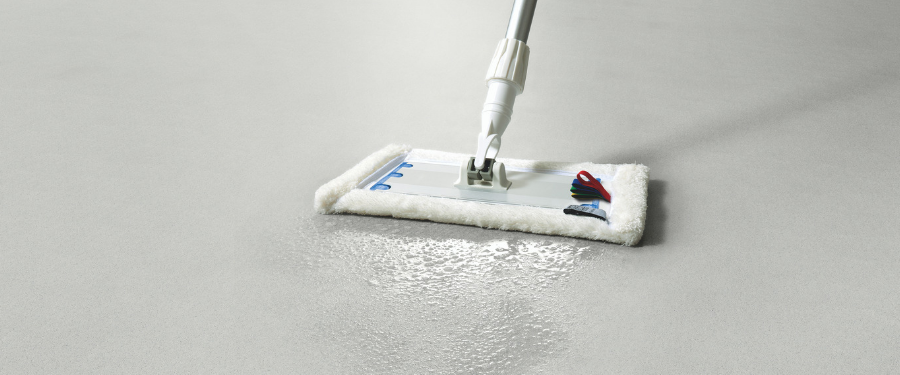There seems to be much consternation in the industry regarding maintenance and cleaning. Most of this function is outsourced and not as easily managed as we’d like. With superbugs becoming more lethal than ever, it is critical to ensure that flooring in a healthcare environment is cleaned correctly. Follow these 4 simple methodologies and avoid any nasty, unwanted complications.

“We recently installed a vinyl floor in a hospital. Our installer warned us about the use of harsh chemicals on the surface, but public health officials insist they need to use these chemicals. What is your advice on the cleaning of a vinyl floor in a hospital setting?” – Tallie Odendaal, Limpopo
Hospital cleanliness has been linked with the rate of incidence of healthcare associated infection (HCAI). There is a direct correlation between the cleanliness of the patient environment (bio-burden) and commensurate level of contamination.
Therefore, in a healthcare environment it is critical that floors are cleaned regularly. Given the focus on hand hygiene and other mucosal surfaces, little thought has been given to the ability of the floor to transmit diseases. The presence of bacteria has even been identified on operating room floors, where sterility is extremely important.
It is fairly obvious that items that come into contact with the floor are contaminated and could be transferring bacteria and infections to other parts of the hospital. Bags placed on the floor and then on a bed, socks walked in and then put on the bed, call buttons, BP cuffs or medical equipment that is dropped and retrieved, etc.
While, due to the nature of a floor and the constant traffic, floors will very quickly become contaminated again. There are some obvious points that need to be considered when cleaning floors in a healthcare environment: Environmental surfaces which are clean and dry will not support microbial colonization.
So how does the floor become a surface for colonization? How many times have you seen the cleaner with a “spaghetti mop” and two buckets of dirty water? Going from room to room swishing dirt around the floor! Machines with scrubbing pads so thin and dirty, it is impossible to clean anything with them. Many cleaners think lots of soap means super clean but if the soap residue is not rinsed off with clean water and then vacuumed up, the soap simply attracts more dirt. Dirt and moisture are just where bacteria love to breed.
Well trained staff who fully understand the reasons behind the cleaning methodology and the risks if not done correctly, are the greatest solution to ensuring your healthcare floor remains clean and as uncontaminated as possible.
Cleaning methodologies should include:
- Use of a neutral detergent solution is essential for effective cleaning. It removes dirt while improving the quality of cleaning by preventing the build-up of biofilms and increasing the effectiveness of chemical disinfectants. all detergent must be rinsed off with clean water.
- Many experts emphasise that so-called attempts to disinfect floors are usually unnecessary, as the actual physical removal of soil and microorganisms is probably at least, as important as the germicidal activity of the disinfectant used. In addition, high concentrations of disinfectant may damage surfaces.
- Cleaning should always start from the least soiled areas (cleanest) to the most soiled areas (dirtiest). In critical areas, ensure cleaning equipment is area specific, thus reducing the risk of cross contamination.
- Use enhanced hygiene tools such as microfibre mops (requiring no detergent). There are a number
of excellent machines on the market that will ensure floors are cleaned, rinsed and vacuumed to ensure no moisture or soap residue is left behind.
For more insights like these sign up for Polyflor Insights and we will send useful tips and advice straight to your inbox.